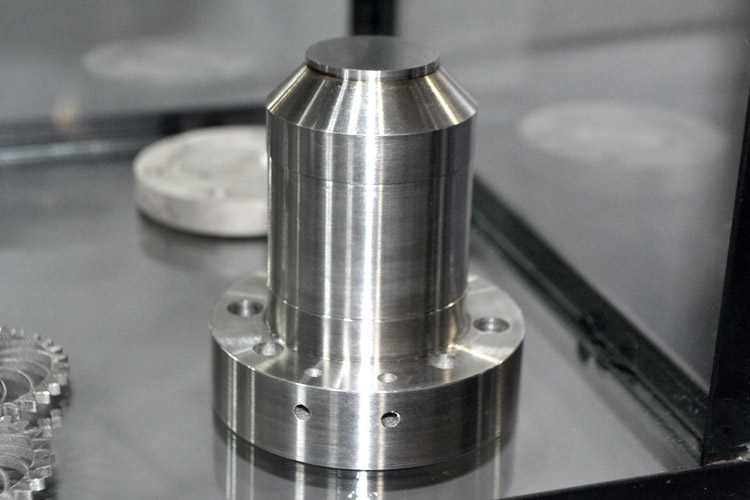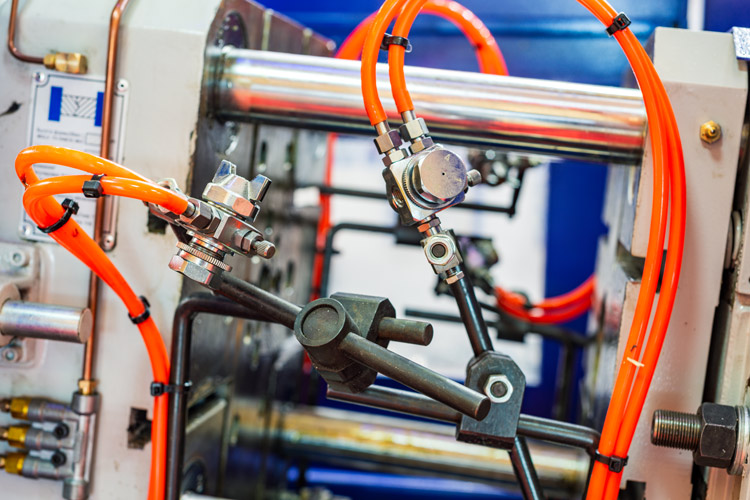What Is the Difference Between Subtractive and Additive Manufacturing?
Depending on what stage of manufacturing you specialize in, you may have heard people talking about additive manufacturing. If you’re curious about the difference between subtractive and additive manufacturing, Anova Innovations is here to help. In this piece, we’ll clearly define both manufacturing processes and highlight the pros and cons of each, with an emphasis on developing 3D steel printed injection molds.
Defining Subtractive and Additive Manufacturing
Put simply, subtractive manufacturing subtracts material to make a product or part, whereas additive manufacturing adds it. Between the technology behind these processes to their respective strengths and weaknesses, various differentiators can help you decide which solution may be best for you.

What is Subtractive Manufacturing?
Subtractive manufacturing is the process of creating a part by removing layers of material. This process requires computer numerical control (CNC) or electrical discharge machining (EDM) machines. CNC machines utilize various tools that move and cut in three dimensions, while EDM machines use laser cutters to remove material.
Common types of subtractive manufacturing include:
- CNC Machining (Boring, Drilling, Milling, Turning, etc.)
- Electrical Discharge Machining (EDM)
- Laser Cutting
- Water Jet Cutting
Manufacturers often use subtractive manufacturing for prototyping and producing low-volume parts and expensive components. So, while most people wouldn’t use this process for high-volume parts, such as pop bottle caps or prescription containers, they may use it to create a mold to ultimately manufacture those plastic parts.
What is Additive Manufacturing?
Additive manufacturing (AM) is a process that creates complex models by adding layers of material, such as steel, metal, or plastic. Nearly every step of this process is computer-aided and automated in order to produce highly intricate parts.

In parts manufacturing, people often use the terms “additive manufacturing” and “3D printing” interchangeably. However, additive manufacturing is really a broad term for any process in which a person or machine creates a part by adding, depositing, and/or layering material. A few of these AM processes include:
- Binder Jetting
- Directed Energy Deposition
- Material Extrusion
- Material Jetting
- Powder Bed Fusion
- Direct metal laser melting (DMLM)
- Direct metal laser sintering (DMLS)
- Electron Beam Melting (EBM)
- Selective Heat Sintering (SHS)
- Selective Laser Sintering (SLS)
- Sheet Lamination
- Vat Polymerization
AM has unlocked the ability to create highly complex parts and intricate shapes that subtractive manufacturing can’t. In the world of mold engineering and design, CAD software, 3D object scanners, and specialized machines have created an array of eco-friendly and commercial benefits such as:
- Reduced Cycle Times
- Higher-Quality Parts
- Boosted Productivity
- The Ability to Use Bioplastics
What makes 3D printed molds so much more efficient and effective is their conformal cooling channels (CCCs). These CCCs follow the precise geometry and contours of a mold. In contrast, traditional subtractive manufactured molds can only have straight-line cooling channels.
As water and cooling fluid run through these CCCs, they not only reach all of the hotspots within a part, but also cool more uniformly than their straight-line counterparts. The bottom line is that, with conformal cooling abilities, you can increase productivity and reduce warpage.
Subtractive vs. Additive Manufactured Molds
| Subtractive Strengths | Additive Strengths |
|---|---|
| • Extremely Durable • Less Finishing Required |
• Create Complex Parts • Reduce Cycle TimesEfficiency • Lower Material Costs • Less Material Waste • Thermoplastic Friendly • Better Part Consistency |
| Subtractive Weakness | Additive Weaknesses |
| • Requires a substantial setup • Can’t Produce Complex Parts • Higher Material Costs • More Material Waste • Difficult to use Thermoplastic • Lower Part Consistency |
• Requires Finishing • Requires More Upfront Design • Higher Upfront Cost |
Additive Manufacturing is the Future
Grand View Research values the global 3D printing market size at $13.84 billion and projects it to grow at a compound annual growth rate (CAGR) of 20.8 percent from 2022 to 2030. Researchers note that the aggressive research and development in 3D printing and the growing demand for prototyping applications from healthcare, automotive, and aerospace will fuel most of the market growth.
The technology behind additive manufacturing also helps with prototyping and product development. Plus, the investment in 3D steel printing is skyrocketing, which helps to ensure continuous process improvement and drive down costs.

Know What You Need
If you’re manufacturing high-volume plastic parts, you should use a 3D printed mold with expertly engineered CCCs to increase productivity, improve part quality, and reduce warping, material and energy waste, and cycle times.
All of these benefits mean you can bring your product to market faster for less money. It’s also important to note that most consumers have made it clear that they want products that create less waste. Additive manufacturing is a way to give them what they ask for while boosting your bottom line.
As manufacturers, we’re constantly seeking new ways to optimize production, reduce costs, and improve the outcomes of our products and parts. Understanding the fundamental differences between subtractive and additive manufacturing will help you select the services and solutions that best fit your needs.
As an industry-leading service provider, we’re here to help you reduce costs and improve production. If you’re interested in learning more about our services, reach out to Anova Innovations today.
